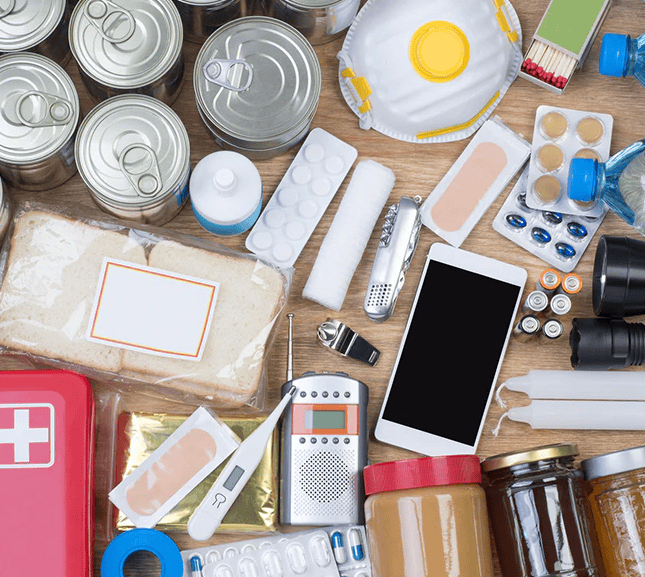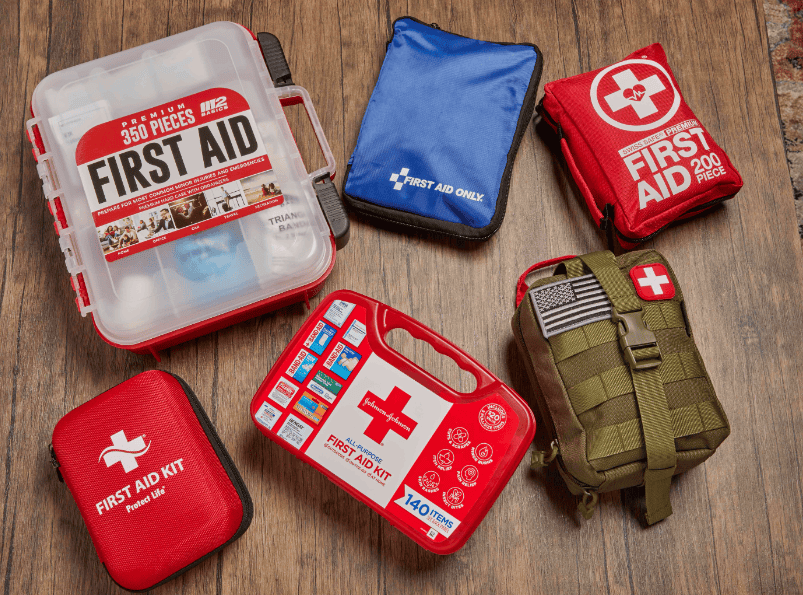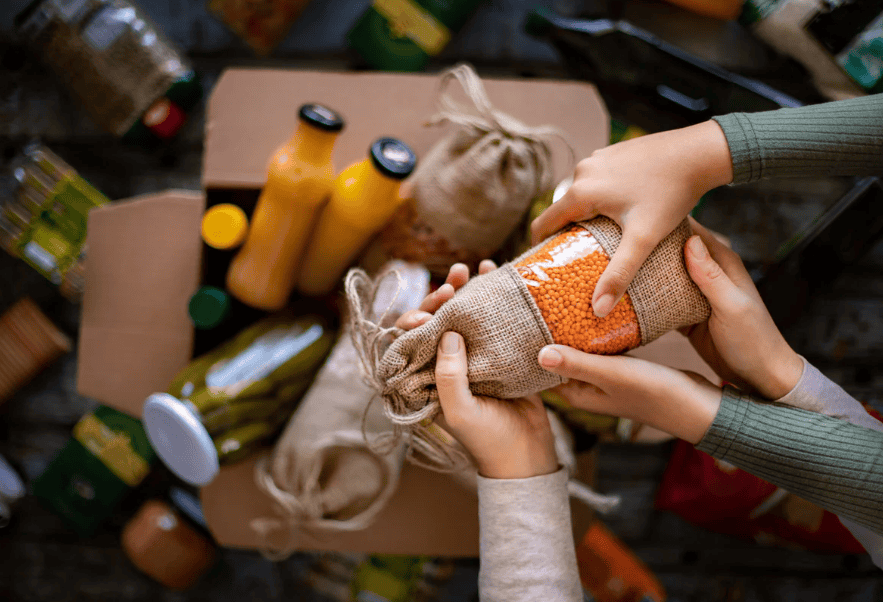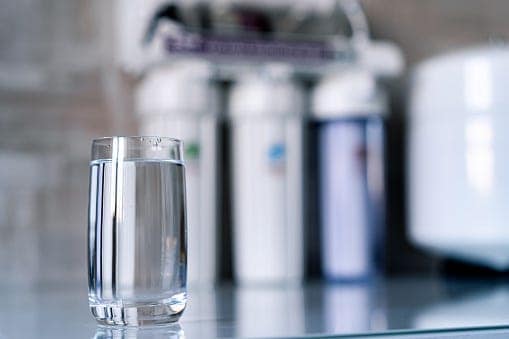Essential Items For Your Emergency Survival Kit: A Comprehensive Guide

Did you know that 60% of Americans are unprepared for natural disasters? When emergencies strike, having the right supplies can make all the difference. In this guide, we’ll walk you through essential items to include in your emergency survival kit. From food and water to first aid supplies and tools, being equipped can save lives. Stay ahead of the unexpected with our comprehensive list.
Key Takeaways
- Regularly check and update your emergency survival kit to ensure it is up-to-date and functional.
- Store emergency kits in easily accessible locations at home, work, and in your car for quick access during crises.
- Include basic disaster supplies like water, food, first aid, and hygiene items in your emergency kit.
- Add extra emergency supplies such as tools, clothing, medications, and important documents to enhance your kit’s effectiveness.
- Replace expired survival items promptly to maintain the readiness of your emergency kit.
- Continuously build and improve your emergency survival kit based on your specific needs and potential risks.
Basic Disaster Supplies Kit
Water and Food
Ensure your emergency kit includes enough water and non-perishable food to sustain each family member for at least three days. Pack items like canned goods, protein bars, and dried fruits.
Be mindful of any special dietary needs within your household. Consider including baby formula or pet food if necessary.
First Aid Supplies
Stock up on a comprehensive first aid kit that includes bandages, antiseptic wipes, pain relievers, and any necessary prescription medications. Include a manual for basic medical guidance.
Check the kit regularly to ensure all supplies are up-to-date and replenish any expired items promptly.
Tools and Supplies
Include essential tools like a flashlight, batteries, a multi-tool, duct tape, and a whistle in your emergency kit. These items can be crucial during power outages or when seeking help.
Pack hygiene items such as moist towelettes, garbage bags, and personal hygiene products for sanitation purposes.

Additional Emergency Supplies
Hand Sanitizer
Hand sanitizer is crucial for maintaining hygiene during emergencies, especially when water is scarce or contaminated.
Plastic Sheeting and Duct Tape
Plastic sheeting and duct tape are essential for creating temporary shelters or sealing off areas to protect against harsh weather conditions.
Masks
Including masks in your emergency kit can help filter out harmful particles in the air, providing respiratory protection during crises.
Water Purification Tablets
Water purification tablets are vital for ensuring a safe drinking water source when clean water is not readily available.
Battery-Powered Lights
Having battery-powered lights in your kit can provide illumination during power outages or nighttime emergencies.
Portable Weather Radio
A portable weather radio enables you to stay informed about changing weather patterns and alerts, helping you make informed decisions during disasters.
Most Important Survival Items
Water and Food
Water is crucial for survival; ensure waterproof containers for storage. Pack non-perishable food, like energy bars or canned goods.
Shelter and Clothing
Include a sturdy tent or tarp in your kit for shelter. Pack extra clothing, focusing on warmth and durability.
First Aid Kit
A well-equipped first aid kit is essential. Include bandages, antiseptic wipes, pain relievers, and any necessary medications.
Tools and Lighting
Carry a multi-tool for various tasks. Include flashlights with extra batteries for illumination during emergencies.
Communication and Navigation
Pack a fully charged cell phone, portable charger, and a list of emergency contacts. Include a map and compass for navigation.
Maintaining Your Kit Regularly
Check Inventory
Regularly review your emergency survival kit to ensure you have all the necessary items. Make a list of what needs restocking.
It’s crucial to verify that you have enough clean water and non-perishable food for each person in your household.
Inspect Equipment
Inspect the hand-crank radio and flashlight to ensure they are functioning properly. Test them periodically to guarantee they work when needed.
Check the expiration dates on medications and replace any that are expired. Rotate perishable items like batteries every six months.
Update Documents
Keep important documents such as identification, insurance policies, and emergency contact information up to date. Store them in a waterproof container.
Maintain a list of everything in your kit along with expiry dates for easy reference. Consider including a local map and a copy of your family’s emergency plan.

Replacing Expired Survival Items
Shelf Life
Survival items in your emergency kit have a shelf life. Food items, such as energy bars and canned goods, typically last between 1-5 years. Water should be replaced every 6 months to ensure freshness and safety.
Items
Check the expiration dates on medications in your kit. Replace any expired medications with fresh supplies to ensure their effectiveness when needed. First aid supplies, such as bandages and antiseptic wipes, also have expiration dates and should be regularly checked and replaced.
Regularly review your emergency kit for expired items. Create a checklist of all items with their expiration dates to stay organized. Consider rotating food and water supplies to prevent any items from expiring unused.
Kit Storage Locations
Home
When storing your emergency survival kit at home, choose a designated spot that is easily accessible to all family members. Consider placing it in a pantry, closet, or under the bed for quick retrieval during emergencies.
Ensure that the location is away from direct sunlight and extreme temperatures to prevent damage to the items inside. Regularly check and update the supplies to maintain their effectiveness when needed.
Car
For car emergencies, keep a smaller version of your survival kit in the vehicle. Store it in a durable container like a plastic bin or backpack to prevent items from rolling around during travel.
Place the kit in the trunk or under a seat for easy access. Include essentials like water, non-perishable snacks, a flashlight, blankets, and a first aid kit tailored for on-the-go situations.
Workplace
Having an emergency kit at your workplace can be crucial during unexpected events. Keep it in a desk drawer or locker where it’s easily reachable in case of evacuations or lockdowns.
Include items such as food bars, personal medications, a whistle, dust masks, and important documents like emergency contact information. Regularly review and replace expired items to ensure readiness.
Home, Work, and Car Storage Tips
Home Storage
When it comes to storing your emergency survival kit at home, ensure it is easily accessible. Containers with lids are a good idea for organizing items effectively.
Consider including solar panels and battery packs in your kit to ensure power availability during emergencies. Family members should know the storage location and its contents.
Work Storage
For storing your emergency kit at work, choose a secure area that is easily accessible to everyone. Keep a list of emergency contacts in the kit.
It’s a good idea to have extra phone chargers and hands-free devices in case of power outages or communication breakdowns. Ensure the kit includes essential items for at least three days.
Car Storage
Storing an emergency survival kit in your car is crucial for unexpected situations. Include items like blankets, non-perishable food, water, and a first aid kit.
Having solar panels or portable battery packs can be beneficial if you get stranded in a remote area without access to power sources. Regularly check the kit’s contents and expiration dates.
Building and Updating Your Kit
Essential Tools
When building your emergency survival kit, consider including versatile tools like a multi-tool, duct tape, and a whistle. These items can serve multiple purposes in various emergency situations.
Smartphone Integration
Integrating your smartphone into your kit can be crucial for accessing emergency information, contacting loved ones, and utilizing helpful apps. Make sure to include a portable charger to keep your device powered.
Regular Updates
Regularly update your emergency kit by checking the expiration dates of food, water, and medications. Consider adding new items based on changing needs or emerging threats.
Weather Adaptability
Include weather-specific items such as extra clothing layers, blankets, hand warmers, or sun protection based on the climate of your region. Being prepared for extreme weather conditions is essential for survival.
Lighting Solutions
Pack reliable sources of light such as flashlights, headlamps, and glow sticks to navigate in the dark during power outages or nighttime emergencies. Opt for long-lasting LED options for efficient use of battery power.
Summary
You now have a comprehensive understanding of the essential items needed for your emergency survival kit. By following the tips on building and maintaining your kit, you are well-equipped to handle unforeseen situations at home, work, or while traveling. Remember to regularly check and replace expired items to ensure your kit is always up to date and ready for any emergency. Store your kit in accessible locations and make sure everyone in your household knows where it is kept. Your preparedness can make a significant difference in how you navigate challenging circumstances, providing you with a sense of security and confidence in times of need.
Stay proactive and take the necessary steps to create or update your emergency survival kit today. Your preparedness could be a lifesaver when facing unexpected disasters or emergencies. Make safety a priority by being ready for whatever comes your way.

Frequently Asked Questions
What are the essential items for a Basic Disaster Supplies Kit?
In a Basic Disaster Supplies Kit, include water, non-perishable food, flashlight, batteries, first aid kit, medications, multi-tool, personal hygiene items, important documents, and cash.
How often should I replace expired survival items in my emergency kit?
Regularly check and replace expired survival items in your emergency kit at least once a year. This ensures that all supplies are up-to-date and reliable during emergencies.
Where should I store my emergency survival kit at home?
Store your emergency survival kit in a designated place that is easily accessible in case of emergencies. A closet or under the bed are good options to ensure quick access.
What are the most important survival items to have in an emergency situation?
The most important survival items include water, food, first aid supplies, flashlight with extra batteries, multi-tool or knife, blankets or sleeping bags, and personal hygiene products.
How can I effectively build and update my emergency survival kit?
To build and update your emergency survival kit effectively, start by making a list of essential items based on potential risks in your area. Regularly review and update the contents to ensure readiness.






